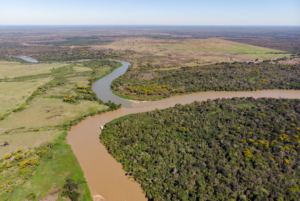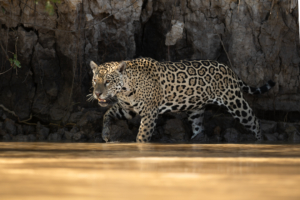Introduction:
The Pantanal, the world’s largest tropical wetland area, has recently faced a series of wildfires that have captured global attention. While these fires are undoubtedly a cause for concern, it’s crucial to understand that they are not uncommon in this vast and diverse ecosystem. Moreover, the Pantanal possesses a remarkable ability to recover, showcasing nature’s resilience.
Regularity of Fires:
Fires in the Pantanal are a recurring natural phenomenon, especially during the dry season. These fires are primarily caused by human activities, lightning strikes, or a combination of both. Fires in the biome occur every year, with varied intensities depending on the weather.
Quick Regeneration of Vegetation:
One of the remarkable features of the Pantanal is its ability to regenerate rapidly after a fire. The ecosystem’s flora has developed mechanisms to cope with fire, such as fire-resistant bark and seeds that germinate more effectively after being exposed to fire. This rapid regeneration ensures that the wetlands quickly return to their lush, vibrant state.
Limited Impact on Large Mammals:
While the fires in the Pantanal have undoubtedly affected wildlife, specially small reptiles and amphibians, reports indicate that most large mammals have managed to escape the flames or find refuge in unburned areas. Species like capybaras, jaguars, and giant otters are adapted to the region’s dynamic environment and have evolved behaviors that help them avoid or survive fires. After these fires in 2023, almost all of the regularly seen Jaguars and its cubs have already been seen, alive and well.
amphibians, reports indicate that most large mammals have managed to escape the flames or find refuge in unburned areas. Species like capybaras, jaguars, and giant otters are adapted to the region’s dynamic environment and have evolved behaviors that help them avoid or survive fires. After these fires in 2023, almost all of the regularly seen Jaguars and its cubs have already been seen, alive and well.
Adaptations of Wildlife:
Many of the large mammals in the Pantanal are well-adapted to the regular occurrence of fires. Jaguars, for example, are known to be excellent swimmers and can escape to water bodies when fires approach. Additionally, the diverse range of habitats within the Pantanal provides ample opportunities for animals to find safe havens during and after fires.
Conservation Efforts:
Despite the ecosystem’s resilience, ongoing efforts are essential to protect the Pantanal from human-induced fires and to maintain its delicate balance. Sustainable land management practices, fire prevention strategies, and community involvement are crucial components of conservation initiatives aimed at preserving the Pantanal’s unique biodiversity, and, with the help of the tourism trade, many actions are being implemented.










